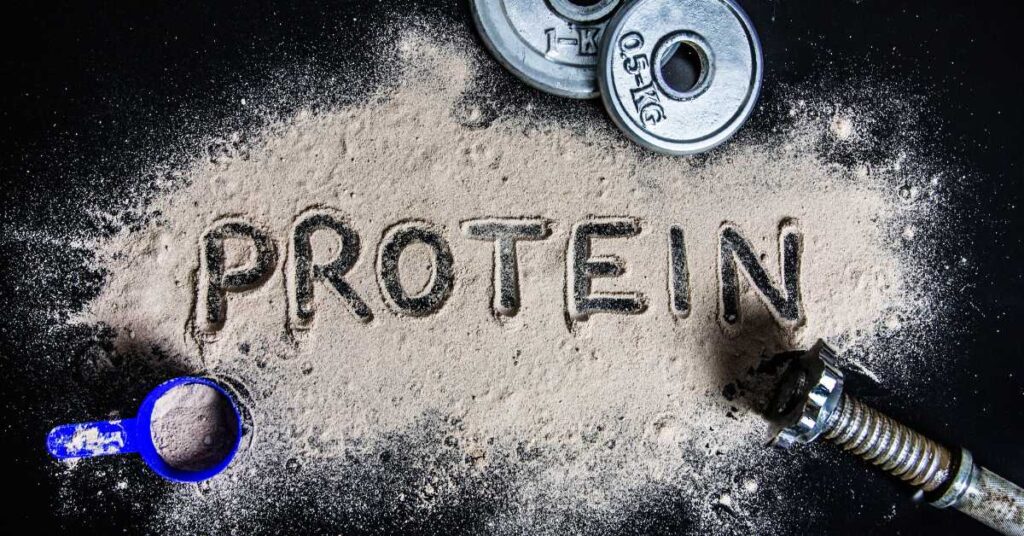Introduction
In today’s sports landscape, technology plays a significant role in optimizing athlete performance. From advanced wearable devices to data analytics software, technology offers innovative solutions that provide valuable insights, enhance training methodologies, and drive performance improvements.
In this article, we will explore how technology is being utilized to enhance athlete performance, the various technologies available, and the benefits they bring to athletes and coaches.
Understanding the Role of Technology in Athlete Performance Enhancement
Embracing the digital era in sports
As technology continues to advance, sports organizations and athletes are increasingly embracing its potential to enhance performance. From amateur athletes to professionals, the integration of technology has become a game-changer in optimizing training methodologies and maximizing athletic potential.
The impact of technology on training and performance
Technology provides athletes and coaches with a wealth of data and insights that were once inaccessible. It enables precise monitoring of biometric parameters, in-depth analysis of performance metrics, and personalized training programs based on individual data. These advancements revolutionize training methods, improve performance outcomes, and elevate the overall athlete experience.
Wearable Devices and Sensor Technologies
Tracking performance with smartwatches and fitness trackers
Wearable devices such as smartwatches and fitness trackers have become ubiquitous in the sports world. They enable athletes to monitor various metrics like heart rate, steps taken, calories burned, and sleep patterns. This data offers valuable insights into an athlete’s overall health, recovery, and training progress.
Real-time biometric monitoring for enhanced training insights
Advanced wearable devices now provide real-time biometric monitoring capabilities. Athletes can track their heart rate variability, oxygen saturation levels, and even muscle activation patterns during training sessions. This data allows for immediate feedback, enabling athletes to optimize their training intensity, adjust technique, and prevent overexertion.
Integrating sensor technologies for precise movement analysis
Sensor technologies, such as accelerometers and gyroscopes, are used to capture and analyze movement patterns. By attaching these sensors to specific body parts or equipment, coaches and athletes can gain insights into factors like speed, acceleration, deceleration, and changes in direction. This information aids in technique refinement and performance optimization.
Data Analytics and Performance Tracking Software
Harnessing the power of data in performance analysis
Data analytics software processes and interprets large amounts of data collected from athletes. It provides coaches with comprehensive performance analysis, identifying patterns, trends, and areas for improvement. By leveraging this information, coaches can make informed decisions and design training programs tailored to individual needs.
Customized training programs through data-driven insights
With the help of performance tracking software, coaches can create customized training programs based on individual data. Athletes receive personalized workout plans that take into account factors such as recovery rates, performance metrics, and individual goals. This individualized approach maximizes training efficiency and optimizes performance outcomes.
Real-time feedback and performance adjustments
Real-time performance tracking software allows coaches to provide immediate feedback to athletes during training sessions or competitions. Athletes receive actionable insights on technique, strategy, and performance metrics. This real-time feedback facilitates on-the-spot adjustments, enabling athletes to make necessary improvements and optimize their performance.
Virtual Reality (VR) and Augmented Reality (AR)
Simulating real-world scenarios for enhanced training
Virtual Reality (VR) and Augmented Reality (AR) technologies provide immersive training environments that simulate real-world scenarios. Athletes can practice and refine their skills in virtual settings, replicating game situations or challenging conditions. This realistic training experience enhances decision-making, spatial awareness, and situational adaptability.
Mental preparation and decision-making through immersive experiences
VR and AR technologies are also used for mental preparation and enhancing decision-making abilities. Athletes can visualize and mentally rehearse specific game scenarios, developing their cognitive skills and strategic thinking. By training their minds in immersive virtual environments, athletes are better prepared to handle high-pressure situations in actual competitions.
Overcoming limitations and enhancing rehabilitation
VR and AR have proven to be valuable tools in rehabilitation settings. They allow injured athletes to continue training and maintaining their skills while recovering. These technologies create engaging and interactive rehabilitation programs, providing motivation, promoting proper movement patterns, and facilitating the recovery process.
Biomechanical Analysis and Motion Tracking Systems
Capturing and analyzing precise movement patterns
Biomechanical analysis involves capturing and analyzing an athlete’s movement patterns with high precision. Using motion capture systems and advanced algorithms, coaches and trainers can study factors such as joint angles, forces exerted, and timing of movements. This analysis helps optimize technique, prevent injuries, and improve performance efficiency.
Optimizing technique and preventing injuries through biomechanical insights
By analyzing biomechanical data, coaches can identify areas where an athlete’s technique can be refined. They can provide targeted interventions to correct movement patterns, optimize energy transfer, and reduce the risk of injuries. Biomechanical insights offer a deeper understanding of an athlete’s physical mechanics and help unlock their full potential.
Enhancing coaching and feedback with motion tracking data
Motion tracking systems enable real-time tracking of an athlete’s movements. Coaches can provide instant feedback on technique, body positioning, and timing during training sessions. This immediate feedback loop enhances coaching effectiveness and accelerates skill acquisition by ensuring proper form and execution.
Artificial Intelligence (AI) and Machine Learning (ML)
Personalizing training programs based on athlete data
Artificial Intelligence (AI) and Machine Learning (ML) algorithms can analyze vast amounts of athlete data, enabling the creation of personalized training programs. By considering factors such as performance history, physical attributes, and recovery patterns, AI-powered systems can design training plans that suit individual needs and optimize performance outcomes.
Predictive analytics for injury prevention and performance optimization
AI and ML algorithms can predict and identify patterns that may lead to injuries or performance decline. By analyzing data on training loads, movement patterns, and recovery metrics, these algorithms can detect signs of overtraining, fatigue, or increased injury risk. Coaches can then make data-driven decisions to prevent injuries and optimize performance.
AI-powered coaching assistants for real-time guidance
AI-powered coaching assistants are being developed to provide athletes with real-time guidance and support. These assistants use AI algorithms to analyze an athlete’s performance, technique, and strategy. They offer feedback, suggestions, and strategic insights, acting as virtual coaches that provide immediate assistance during training or competition.
Challenges and Considerations in Implementing Technology
Ensuring data accuracy and reliability
One of the challenges in utilizing technology for athlete performance enhancement is ensuring data accuracy and reliability. Robust data collection protocols and calibration processes must be implemented to minimize errors and ensure the data collected is accurate and trustworthy.
Balancing technology with human coaching expertise
While technology provides valuable insights, it is important to maintain a balance between technology and human coaching expertise. Coaches play a crucial role in interpreting and contextualizing the data provided by technology, providing guidance, and fostering a supportive athlete-coach relationship.
Addressing privacy and ethical concerns
The use of technology in athlete performance enhancement raises privacy and ethical concerns. Collecting and analyzing personal data must be done in compliance with privacy regulations, and athletes’ consent must be obtained. Additionally, considerations must be made to ensure fair competition and prevent the misuse of technology to gain an unfair advantage.
Benefits of Utilizing Technology for Athlete Performance Enhancement
Enhanced training efficiency and effectiveness
Technology allows for more efficient and effective training methods. Athletes can train smarter by leveraging data-driven insights, optimizing their training intensity, and focusing on specific areas for improvement. This enhanced training approach maximizes performance outcomes and reduces wasted effort.
Accelerated skill acquisition and development
By utilizing technology, athletes can accelerate their skill acquisition and development. Real-time feedback, virtual training environments, and personalized training programs help athletes refine their techniques, make quicker progress, and reach higher levels of performance in a shorter period.
Injury prevention and optimized recovery strategies
Technology plays a significant role in injury prevention and optimizing recovery strategies. Through advanced monitoring and analysis, coaches can identify potential injury risks, adjust training loads, and implement targeted recovery protocols. This proactive approach minimizes the likelihood of injuries and ensures athletes are performing at their best.
Conclusion
Technology has revolutionized athlete performance enhancement by providing valuable insights, personalized training programs, and immersive training experiences. From wearable devices and data analytics software to virtual reality and artificial intelligence, technology has opened up new possibilities for optimizing training methods and maximizing athletic potential. By embracing these technological advancements while considering challenges and ethical considerations, athletes and coaches can unlock new levels of performance and take their sports to new heights.
FAQs (Frequently Asked Questions)
1. Is technology only for professional athletes?
No, technology can benefit athletes at all levels, from beginners to professionals. The availability of affordable wearable devices, apps, and software has made technology accessible to athletes of all backgrounds.
2. How do wearable devices track performance?
Wearable devices use sensors to track various metrics such as heart rate, steps taken, and calories burned. Some devices also incorporate GPS for tracking distance and speed during activities like running or cycling.
3. Can technology replace human coaches?
Technology cannot replace human coaches, but it can augment their expertise. Coaches play a vital role in interpreting data, providing guidance, and establishing a supportive athlete-coach relationship.
4. Are there privacy concerns with the use of technology in sports?
Yes, privacy concerns exist with the collection and use of athlete data. It is important to ensure compliance with privacy regulations, obtain athlete consent, and safeguard sensitive information.
5. What are the costs associated with implementing technology for athlete performance enhancement?
The costs associated with implementing technology vary depending on the specific tools and systems used. While some technologies can be more expensive, there are also affordable options available, making it accessible to athletes and organizations with different budgets.







